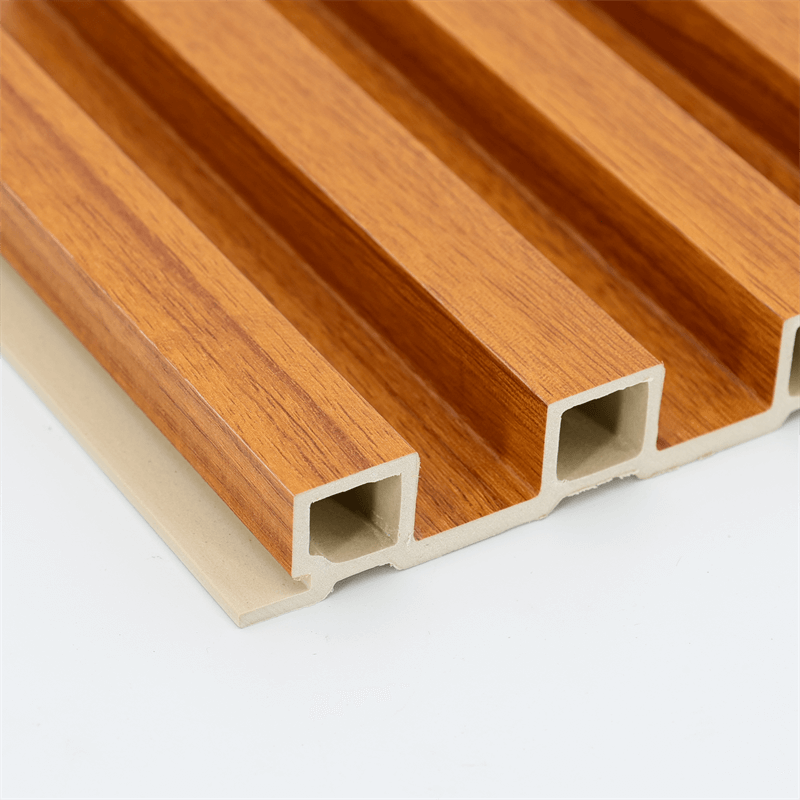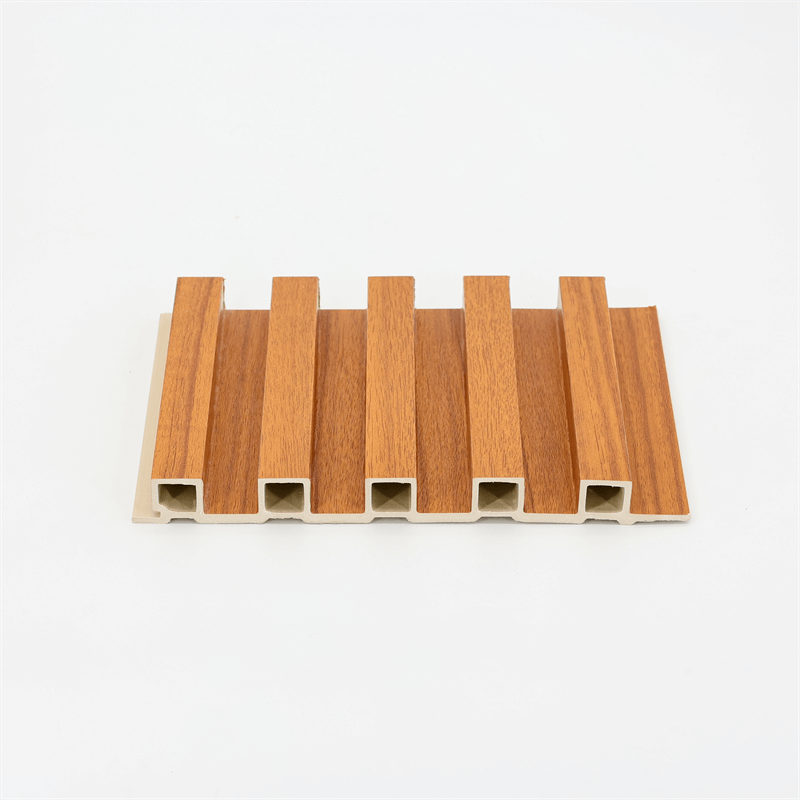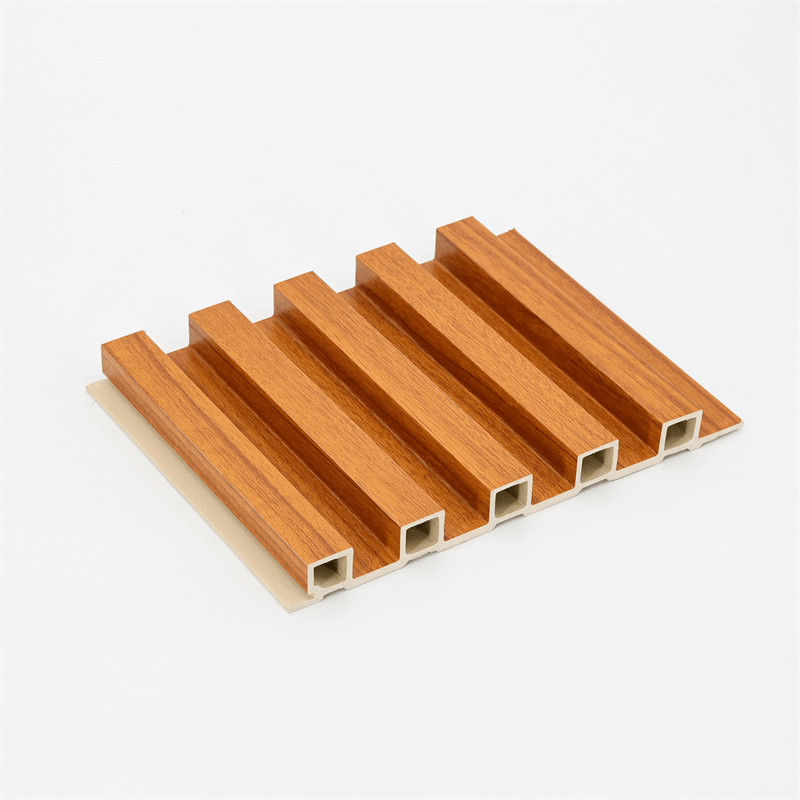In the quest for energy efficiency and sustainable building practices, thermal insulation plays a crucial role.
Wood-Plastic Composite (WPC) wall panels have gained recognition for their exceptional thermal insulation properties.
This essay explores how WPC wall panels provide excellent thermal insulation, focusing on their composition, insulation performance, reduction of heat transfer, and contribution to energy efficiency in buildings.
I. Composition: Understanding the Insulating Elements of WPC Wall Panels
To comprehend the thermal insulation capabilities of WPC wall panels, it is essential to understand their composition.
These panels consist of a blend of wood fibers, plastic polymers, and additives.
The combination of these materials creates a composite that possesses excellent thermal insulation properties.
The insulating elements in WPC wall panels primarily stem from the cellular structure of wood fibers.
Wood cells contain air pockets that serve as natural insulators, effectively reducing heat transfer.
Additionally, the plastic polymers in WPC panels contribute to their insulation performance by minimizing thermal conductivity.
II. Insulation Performance: R-Value and U-Value
The insulation performance of WPC wall panels is commonly measured using two key parameters: the R-value and U-value.
The R-value represents the resistance of the material to heat flow, indicating its thermal insulating effectiveness. A higher R-value signifies better insulation.
WPC wall panels exhibit commendable R-values, indicating their ability to impede heat transfer through walls.
The insulating properties of these panels help maintain a comfortable indoor temperature, reducing the reliance on heating and cooling systems and conserving energy.
In contrast, the U-value measures the overall heat transfer coefficient, taking into account the entire wall assembly.
WPC panels, when incorporated into the wall assembly, contribute to lower U-values, reflecting their capacity to minimize heat loss or gain.
By reducing heat transfer, WPC wall panels contribute to improved thermal comfort and energy efficiency in buildings.
III. Reduction of Heat Transfer: Insulating Against Conduction, Convection, and Radiation
WPC wall panels excel in reducing heat transfer through three primary mechanisms: conduction, convection, and radiation.
Understanding these mechanisms provides insight into the effectiveness of WPC panels in thermal insulation.
Conduction refers to heat transfer through direct contact between materials.
The composition of WPC wall panels, with the combination of wood fibers and plastic polymers, significantly impedes the conduction of heat.
The cellular structure of wood fibers and the low thermal conductivity of plastic polymers effectively restrict the flow of heat through the panels.
Convection involves heat transfer through air movement. The cellular structure of WPC panels creates air pockets within the material, limiting air movement and minimizing convective heat transfer.
This aspect contributes to the overall thermal insulation performance of the panels.
Radiation is the transfer of heat through electromagnetic waves. WPC wall panels, with their composition and surface characteristics, possess properties that reflect and absorb radiant heat.
By reducing radiant heat transfer, these panels aid in maintaining a stable indoor temperature and reducing energy consumption.
IV. Energy Efficiency: Benefits of WPC Wall Panels in Building Performance
The excellent thermal insulation provided by WPC wall panels offers several benefits related to energy efficiency in buildings.
By minimizing heat transfer, these panels contribute to improved building performance and reduced energy consumption.
Firstly, WPC wall panels help to maintain a stable indoor temperature, reducing the need for excessive heating or cooling.
This results in lower energy usage and decreased reliance on mechanical systems, leading to energy savings and reduced greenhouse gas emissions.
Additionally, the insulation properties of WPC panels enhance occupant comfort.
By creating a more thermally efficient environment, these panels contribute to a consistent and comfortable indoor temperature throughout the year, reducing the need for temperature adjustments and increasing occupant satisfaction.
Moreover, the reduced heat transfer facilitated by WPC wall panels can mitigate the effect of external temperature fluctuations.
This is particularly advantageous in regions with extreme climates, where insulation plays a critical role in maintaining comfortable indoor conditions.
In conclusion, WPC wall panels offer excellent thermal insulation properties, contributing to energy efficiency and sustainable building practices.
The composition of these panels, combining wood fibers and plastic polymers, creates a cellular structure that reduces heat transfer through conduction, convection, and radiation.
The insulation performance of WPC wall panels, measured by the R-value and U-value, indicates their ability to impede heat flow and minimize overall heat transfer.
By reducing heat transfer, these panels improve thermal comfort, decrease energy consumption, and enhance building performance.

In the pursuit of energy-efficient and sustainable buildings, incorporating WPC wall panels can be a valuable strategy.
The exceptional thermal insulation provided by these panels not only reduces energy usage but also contributes to occupant comfort and overall building efficiency.
By embracing the thermal insulation capabilities of WPC wall panels, the construction industry can move towards more sustainable practices and create spaces that are comfortable, energy-efficient, and environmentally responsible.
In summary, the thermal insulation properties of WPC wall panels make them an excellent choice for enhancing energy efficiency and promoting sustainable building practices.
Their composition, insulation performance, and ability to reduce heat transfer through conduction, convection, and radiation contribute to improved building performance and occupant comfort.
By incorporating WPC wall panels into building designs, the industry can achieve significant energy savings, reduce greenhouse gas emissions, and create more comfortable indoor environments.
The stable indoor temperature provided by these panels reduces the reliance on mechanical heating and cooling systems, leading to long-term energy efficiency and cost savings.
Furthermore, the thermal insulation capabilities of WPC wall panels have a positive impact on overall building performance, particularly in regions with extreme climates.
These panels help maintain a consistent indoor temperature, shielding occupants from external temperature fluctuations and ensuring a comfortable living or working environment.
As the demand for sustainable and energy-efficient buildings continues to rise, WPC wall panels present a viable solution for achieving thermal insulation goals.
By prioritizing the use of these panels in construction projects, designers and builders can contribute to a greener future, reduce energy consumption, and create spaces that prioritize occupant comfort and well-being.
In conclusion, WPC wall panels provide excellent thermal insulation, offering numerous benefits for both the environment and building occupants.
Their ability to minimize heat transfer, enhance energy efficiency, and contribute to sustainable building practices make them a valuable asset in the construction industry.
By harnessing the thermal insulation capabilities of WPC wall panels, the industry can move towards a more sustainable and energy-efficient future.


